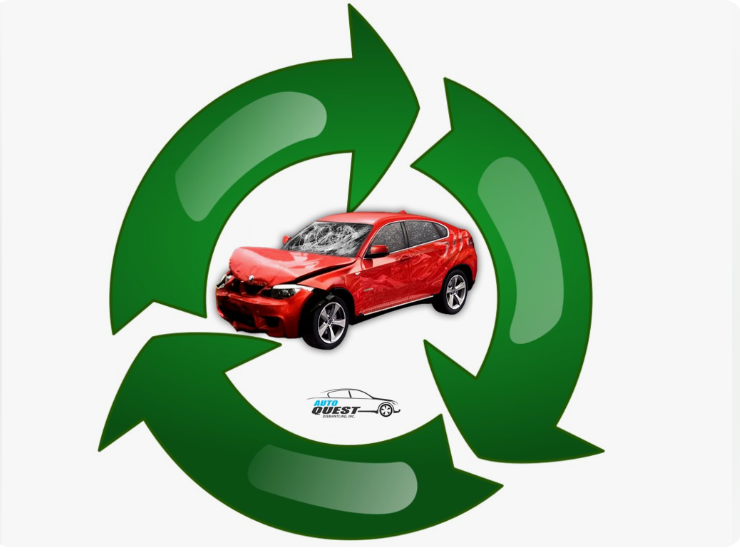In the world of automotive recycling, the concept of “Cash for Clunkers” has become a notable phenomenon. This initiative aims to remove old, inefficient vehicles from the roads while providing incentives for their owners to replace them with newer, more environmentally friendly models. However, behind this seemingly straightforward program lies a complex process through which auto recyclers transform these old cars into profitable assets. One crucial aspect of this process is accident car removal, which plays a significant role in the overall operation of metal biz recyclers.
Understanding Accident Car Removal:
Accident car removal is a fundamental service offered by auto recyclers, wherein they collect and dismantle vehicles that have been involved in accidents or are no longer roadworthy. These vehicles may have suffered significant damage, making them unsafe or uneconomical to repair. By removing these cars from circulation, auto recyclers not only contribute to road safety but also create opportunities for extracting value from salvageable components.
The Process of Accident Car Removal:
Accident car removal involves several steps, beginning with the assessment of the damaged vehicle’s condition. Experienced professionals evaluate the extent of the damage and determine whether the vehicle can be salvaged for parts or if it needs to be scrapped entirely. Once the assessment is complete, the auto recycler arranges for the transportation of the vehicle to their facility, where it undergoes thorough dismantling.
At the recycling facility, trained technicians carefully disassemble the vehicle, separating reusable parts from those that are beyond repair. Components such as engines, transmissions, and body panels are inspected for quality and usability. Salvageable parts are cleaned, refurbished if necessary, and stored for resale, while non-recyclable materials are responsibly disposed of or processed for recycling.
The Importance of Sustainable Practices: In the context of accident car removal, sustainability is a crucial consideration for auto recyclers. By adhering to environmentally responsible practices, recyclers minimize the impact of vehicle disposal on the ecosystem. This includes proper handling and disposal of hazardous materials such as oils, fluids, and batteries, as well as maximizing the recycling potential of metal and other materials recovered from the dismantled vehicles.
Furthermore, sustainable practices extend beyond the recycling process itself to include efforts to reduce the environmental footprint of transportation and logistics. Many auto recyclers prioritize the use of fuel-efficient vehicles and employ efficient routing strategies to minimize fuel consumption and emissions associated with accident car removal operations.
Creating Value from Salvage:
One of the key objectives of accident car removal is to extract maximum value from salvaged vehicles. Auto recyclers utilize a variety of strategies to achieve this goal, including identifying high-demand parts for resale, leveraging economies of scale in dismantling operations, and exploring alternative markets for recycled materials.
For example, components such as engines and transmissions from accident-damaged vehicles can often be refurbished and sold as cost-effective replacements for vehicles in need of repairs. Similarly, scrap metal recovered from dismantled cars can be processed and sold to manufacturers for use in the production of new vehicles or other consumer goods.
Maximizing Profitability:
Accident car removal is not only a service provided by auto recyclers but also a significant revenue stream for their businesses. By efficiently managing the entire process from vehicle acquisition to part sales and material recycling, recyclers can generate substantial profits while contributing to environmental sustainability.
Moreover, the profitability of accident car removal can be enhanced through strategic partnerships and collaborations within the automotive industry. For example, recyclers may establish relationships with insurance companies, salvage yards, and repair shops to streamline the acquisition of damaged vehicles and increase the volume of salvageable parts available for resale.
The Future of Auto Recycling:
As the automotive industry continues to evolve, the role of auto recyclers in sustainable resource management will become increasingly important. Innovations in vehicle design and manufacturing are likely to influence the composition of end-of-life vehicles, presenting new challenges and opportunities for recyclers.
Additionally, advancements in technology, such as electric and autonomous vehicles, may reshape the landscape of car disposals brisbane and recycling. While electric vehicles pose unique challenges due to their complex battery systems, they also offer opportunities for recyclers to develop expertise in handling and repurposing advanced materials.
Conclusion:
In conclusion, accident car removal is a critical aspect of the auto recycling industry, enabling recyclers to transform old and damaged vehicles into profitable assets. Through sustainable practices, efficient processes, and strategic partnerships, recyclers can extract maximum value from salvaged cars while minimizing their environmental impact. As the automotive landscape continues to evolve, the role of auto recyclers in creating a more sustainable future for the industry is poised to grow significantly.

